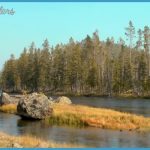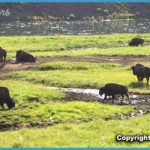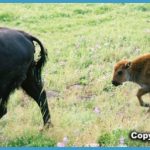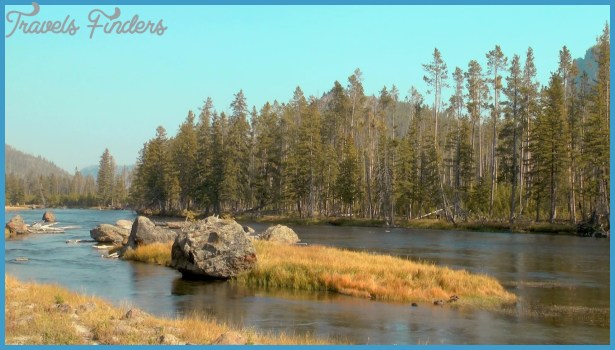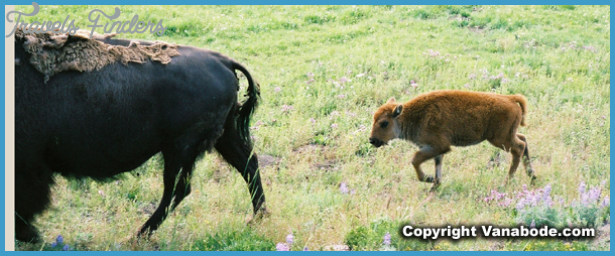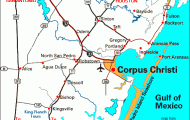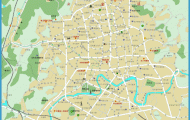Over the years of Yellowstone Park’s history, explorers and geologists have discovered and named eight plateaus within the much larger Yellowstone plateau (see map for approximate locations). Four were created by volcanic flows; the other four simply fit the definition of a plateau; that is, an extensive raised land area that is relatively flat. 1. Pitchstone Plateau is a geologically new expanse of rhyolite lava that flowed out of the caldera only 70,000 years ago in the most recent of the 30 or so relatively small eruptions of lava and ash since the last great caldera explosion. Since rain and snowmelt percolate rapidly through this ground, few streams are created, and trees grow only along the ridges. Today’s hiker can find the pressure ridges caused by the wrinkling of lava that cooled at the surface. Pitchstone is another name for obsidian or volcanic glass, but such glass is not especially common on this plateau. 2. Two Ocean Plateau is a non-volcanic, high, rolling area about 10,000 feet (3050 m) high in the remote Thorofare corner. Its name comes from an area just south of the park boundary, from which creeks flow toward the two oceans. Not far from Two Ocean Pass are the sources of both the Snake and the Yellowstone rivers. Mountain man Jim Bridger knew the plateau well and may have been its discoverer in the early 19 th century. 3. Mirror Plateau has an average elevation of about 9000 feet (2750 m). It takes its name from little Mirror Lake, which is located on the drainage divide between the Lamar and Yellowstone rivers.
Approximate Locations of Yellowstone Plateaus 4. Buffalo Plateau was named by a group of prospectors in 1870, when it was a grazing ground for thousands of buffalo. 5. Blacktail Deer Plateau is an expanse of grass- and tree-covered glacial debris about 7000 feet (2130 m) high. 6. Solfatara Plateau is a small and fairly recent volcanic flow dating back 110,000 years. The first known solfatara, near Naples, Italy, is a volcanic crater that exhales hydrogen sulfide, sulfur dioxide, and steam. In Yellowstone, the Solfatara Plateau is an area with many fumaroles, where your nose may easily detect sulfurous gases. 7. Central Plateau is centered in the lower loop of the Grand Loop Road. The Nez Perce lava flow on this plateau is 160,000 years old. 8. Madison Plateau is the result of several lava flows of different ages. The West Entrance Road and the Grand Loop Road near Old Faithful both pass along its edges. 10.2/11.3 Lewis Falls parking along the road at both ends of the Lewis River bridge. At the falls the flow of the Lewis River turns sharply from south to east. A rocky climb to the top of the falls on the upstream side of the bridge provides a pleasant short hike. The river is gradually cutting down through the Pitchstone Plateau lavas that filled the Yellowstone caldera to overflowing in this area. You can tell that the Lewis Falls drops about 30 feet (9 m). lavas cooled quickly from the presence of black shiny obsidian, where the lava cooled too fast to form crystals.
Lewis Falls is approximately at the caldera’s southern boundary. East of the bridge, the river turns south again. The wide, calm river in its peaceful meadow gives no hint of the deep canyon it’s scouring a few miles downstream. Soggy meadows like this one are good places to find moose, who love to browse standing in water. A short side road to the west leads to Lewis Lake Campground, picnic area, and boat launch site. The campground has 85 sites available on a first-come, first-served basis. There are no showers here. Ironically, this campground may be closed early in the summer due to excess water. Lewis Lake formed where the rocks of the caldera rim resisted erosion by the Lewis River, creating a natural dam. The lake is about 3 miles (4 km) long and nearly as wide, with a maximum depth of 108 feet (33 m). Anglers catch unusually large nonnative lake trout and brown trout here. The lake was named for Captain Meriwether Lewis of the famous 1803-6 Lewis and Clark Expedition. Although the men did not enter the park’s territory, the expedition added a great deal to the knowledge of the vast American west and bestirred the public’s curiosity about it. All types of boats up to 40 feet in length are permitted on Lewis Lake. A popular option is to launch a canoe here and follow the western shore of the lake to the channel that connects to Shoshone Lake about 3 miles (5 km) to the north. Both boating and overnight permits are required. Fishermen catch brown and lake trout here and large brown trout in the Lewis River channel. Heart Lake Trail-head, from a large parking area on a short side road to the east. The trail is heavily used by both hikers and horseback parties.
Before reaching Heart Lake in about 7 miles (11 km), you’ll notice the many hot springs and small geysers along Witch Creek. The trail’s first 4 or 5 miles are relatively flat. Then it passes along the side of Factory Hill at the northern edge of the Red Mountains before descending about 500 feet (150 m) to reach the lake, which abounds in large trout. From this trail you can also climb to the summit of Mount Sheridan a 2700-foot (820 m) climb in about 3 miles (5 km). Heart Lake Geyser Basin saw the tragic death of Yellowstone’s Research Geologist Roderick A. Hutchinson and a colleague in an avalanche in March 1997. Hutchinson contributed much to the understanding of the park’s thermal areas in his 27 years as a staff member. 0 Historians believe that Heart Lake was named for an 1840s hunter named Hart Hunney and that the spelling was changed from Hart to Heart in the 1870s because of the lake’s shape. However, you can see on any map of Yellowstone that Lewis Lake is the one that’s more conventionally heart-shaped! Heart Lake has both cutthroat and lake trout; in fact, it yielded the largest fish ever caught in the park a 42 pound (19 kg) lake trout. Dogshead and Lewis River Channel trailheads to the west. These are two routes to the same place, Shoshone Lake, the second largest lake in Yellowstone. Dogshead Creek flows south into Lewis Lake. The Dog’s-Heads in Greece are a range of hills where a famous Roman victory was won, but whether this was the source of the name in Yellowstone, or whether the name originally referred to a coyote or wolf, no one knows for sure. The Dogshead Trail is the shorter but less interesting of the two trails, reaching Shoshone Lake in about 4.5 miles (7 km).
The Lewis River Channel Trail reaches the channel in 3 miles (4.8 km) and Shoshone Lake in about 7 miles (11 km), skirting Lewis Lake on the way. The channel is a favorite with fishermen in the fall, when brown trout are spawning. If you’re traveling south, you’ll see the Red Mountains looming almost ahead of you in this area, with Mount Sheridan their highest point. Mount Sheridan sports one of the three fire towers remaining in the park. the east. An easy hike of about 4.5 miles (7 km) round trip traverses burned forest and meadows full of wildflowers. The lake is covered with lily pads and backed by Mount Sheridan. Before mid July this trail may be soggy, and it’s usually closed for bear management until that time. The name Riddle Lake is an old one. Early hunters who thought this lake was located directly on the Continental Divide and drained to both oceans may have called it Riddle Lake. The name Biddle Lake sometimes shows up on old maps in this location or where Jackson Lake is, presumably honoring Nicholas Biddle, the Philadelphia publisher of William Clark’s map. Riddle Lake actually drains into Yellowstone Lake and thence to the Atlantic Ocean. A U.S. Geological Survey party in 1885 decided no riddle should be without a solution, so they named the lake’s outlet Solution Creek.

